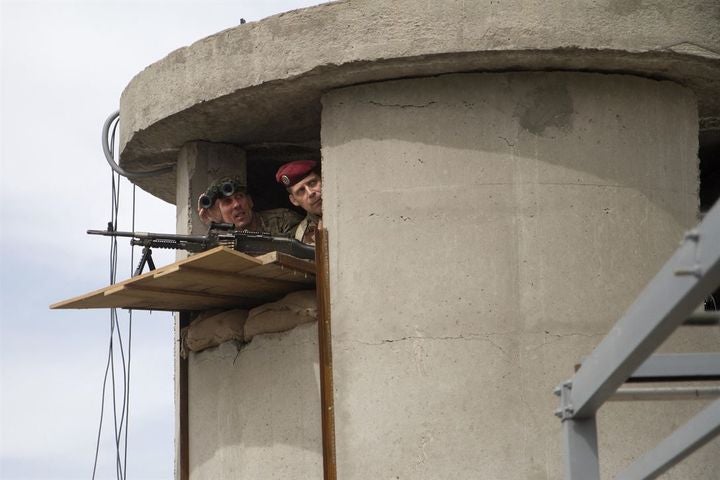On the morning of July 7, 2005, I traveled by London Underground to the RMS offices near Monument Station. This was no ordinary day for London commuters. Three suicide bombs detonated in trains during the morning rush hour had shut down the Tube system. I returned home in the evening partly on foot, and partly by bus, mindful that a suicide bomb had been detonated on the upper deck of a London bus. Including the four suicide bombers, the death toll was 56. Another seven hundred were injured, and hundreds more were treated for shock and distress.
In catastrophe risk modeling, the occurrence of a major event provides an important opportunity for model validation, and so it was with 7/7. Terrorism modeling had only begun less than four years earlier, in the wake of the Al Qaeda multiple terrorist attacks on 9/11. This is now almost nineteen years ago, and younger insurance professionals may not have a direct sense of the turmoil and chaos prevailing at the time. President George W. Bush has recalled in his memoirs that he went to bed on September 12, 2001 thinking: “Another day with no attack. Thank God.” Insurers were desperately anxious over the uncertainty in the frequency of Al Qaeda terrorist attacks, and every other aspect of terrorist modus operandi.
Path of Least Resistance
The key principle underlying the RMS terrorism risk model which was launched in 2002 was given by Magnus Ranstorp, a leading international expert on Islamist militant groups. The universal principle is that terrorists follow the path of least resistance in their operations. In the strategic game between terrorists and the forces of counterterrorism, terrorists will avoid strength and strike weakness. This has been a cornerstone of The Art of War for 2,500 years, and also of terrorism campaigns.
On 7/7, rather than attempt to attack a well-defended high value target, such as a government building, the four terrorists targeted the London public transport system, which had minimal security. Switching targets according to security is called terrorist target substitution. In his martyrdom video, the 7/7 ringleader, Mohammad Sidique Khan, declared his grievance as being the war in Iraq. Because of rigorous US-VISIT border protection, it would have been foolhardy for British jihadis to attempt to attack targets within USA. It was much easier to attack targets in U.K., the main ally of USA.
Terrorists aim to maximize leverage gain, which is the ratio of the loss inflicted to the cost of a terrorist operation. The London transport attacks took place at the peak of the morning rush hour, when the passenger density was highest, and four backpack bombs were deployed. Far less explosive material, cost and effort are required to make backpack bombs compared with vehicle bombs, which have been called the terrorists’ air force.
Implications for Terrorism Insurers
For terrorism insurers, a truck bomb deployed in a central business district is a typical major disaster scenario. Since 9/11, there has not been a successful terrorist vehicle bomb attack in U.K. or USA. The closest to success was Faisal Shahzad, who attempted to detonate an SUV bomb in Times Square on May 1, 2010. He was a lone actor, meaning that he was not part of an active terrorist cell who could assist with bomb-making, and other logistical challenges. Faisal Shahzad lacked the technical expertise to make a viable bomb, so his ambitious plot failed. However, he had at least succeeded in evading the broad counterterrorism surveillance net which seeks to find early warning of a terrorist plot, and to arrest the conspirators before they move towards their targets.
Three months before the Times Square plot, I had visited New York to present to the Board of the Reinsurance Association of America on social network constraints on terrorist plots. My key message is summarized in the mantra: ‘Too many terrorists spoil the plot.’ This is positive news for reinsurers: the ambitious terrorist plots that might cause substantial terrorism insurance losses are very likely to be interdicted. With the massive resources allocated to counterterrorism, and the extensive electronic surveillance of prospective terrorists, any plot involving more than a few operatives is most likely to end in arrest.
I relayed this message to the House Financial Services Committee in September 2013, when I testified to U.S. Congress on terrorism insurance modeling. I also conveyed the message that, with the Western Alliance focus on counterterrorism action to prevent attacks, terrorism insurance is effectively insurance against the failure of counterterrorism. If and when a spectacular terrorist attack occurs, as the whistleblower Edward Snowden informed the world, there must have been some lost opportunity for foiling the plot.
Counterterrorism Investment
In U.K., counterterrorism was stepped up significantly after 7/7, and the bulk of the successful terrorist attacks in U.K. have involved individual operatives attacking on their own. The most notorious of these was the Manchester Arena attack on May 22, 2017, which cost the lives of 22 mainly young concertgoers, as well as the suicide bomber, Salman Abedi. As with the lone actor terrorist suspect in the Reading knife attack of June 20, 2020, he was a Libyan asylum seeker. The Manchester attack was described by the Prime Minister as the worst ever to strike the north of England, notwithstanding the IRA bombing of the Manchester Arndale Centre in June 1996, which caused an insurance loss of £400 million. All lives matter more than any property, whatever the insured value.
Terrorists delight in schadenfreude: the worse the loss to society, the greater is their gain. The Ariana Grande concert at the Manchester Arena, so popular amongst the superstar’s teenage fans, was the optimal time and place for Salman Abedi’s backpack bomb attack. The optimality of this attack delivered another lesson for terrorism risk analysts: a suicide bomber can only die once. The martyr’s target has to be chosen to be the best possible. Having eluded the attention of MI5, Salman Abedi had numerous options for his attack.
With large scale terrorist attacks being increasingly hard to perpetrate due to the persistent pressure of counterterrorism surveillance, terrorists are more likely to be successful if they operate on their own, albeit with inspiration from online terrorist propaganda. Terrorism is the language of being noticed. Manifestos posted by right wing domestic terrorists have influenced copycat attacks around the world. Through his attack on two mosques in Christchurch, New Zealand, on March 15, 2019, Brenton Tarrant drew attention to his manifesto on the ‘Great Replacement.’ One reader, Patrick Crusius, cited this manifesto as an inspiration for his tirade against the perceived Spanish invasion of Texas, and his shooting attack on a Walmart store in El Paso on August 3, 2019.
The most crucial knowledge required for catastrophe risk modeling of any peril, natural or man-made, is an understanding of the fundamental principles governing the risk. These principles are established for natural hazards, and since 9/11 and 7/7, they have been firmly consolidated in RMS terrorism risk modeling. With threat modeling grounded by these principles, reliance on subjective opinions is no greater than for modeling natural hazards, and as shown by experience of model usage since 9/11, the risk results are robust for managing terrorism insurance risk.
Find out more about RMS Terrorism Risk Modeling.






